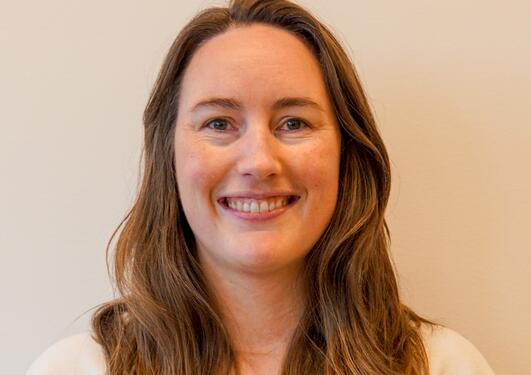Food4HealthyLife: Healthy eating for longevity & prevention of chronic diseases
The Food4Healthylife project will address these societal challenges by developing a healthy eating tool that can be used for individuals in guiding how to best reduce dietary-related risk factors.

Main content
The tool uses the most comprehensive and up-to-date evidence from meta-analyses on intake of food groups, disease-specific morbidities, and overall mortality, together with background data on mortality and morbidity risks. The tool will be evaluated for effect through a randomized controlled trial in general practice in a primary health care setting among people with cardiovascular and metabolic risk factors.
Understanding the potential impact on life expectancy of sustained changes in intake of specific food groups from current typical patterns to more optimal dietary patterns could guide decision-making by individuals, clinicians, and policy-makers when working toward the Sustainable Development Goals.
Background for the project
Healthy eating is essential for health, and globally, dietary risk factors are estimated to cause 11 million deaths and 255 million disability-adjusted life-years annually. Navigating within the nutritional research field can be overwhelming to clinicians, policymakers, and even researchers.
...Read more...
Fortunately, several recent meta-analyses have summarized the impact on the risk of premature deaths for various food groups, including fruits, vegetables, whole grains, and refined grains, nuts and legumes, fish, eggs, milk/dairy, red- and processed meats, and sugar-sweetened beverages. The Global Burden of Disease study (GBD) provides summary measures of population health that are relevant when comparing health systems and provides population-level estimates for some dietary risk factors. However, such aggregated health metrics have little relevance when making individual decisions. Although the risk factor estimates from the planetary diet and Global Burden of Disease study indicate directions of changes in food intake that are useful, more comprehensive models estimating the impact of various dietary choices on lifetime health are needed. Thus, our group developed the Food4HealthyLife model that gives quantified estimates for how various eating patterns are associated with life expectancy gains or losses. Our first model with an online calculator tool was launched in a paper that presented three different dietary scenarios but could assess a range of dietary changes. The tool combined data from the Global Burden of Disease study and from the meta-analyses on various food groups provided models that accounted for age- and sex-specific background mortality, correlation in food intake, as well as delay in health effect of changes in eating patterns. The tool presented output with uncertainty intervals and the overall quality of evidence as moderate using NutriGrade. Such methodology is essential in order to make informed dietary choices at all levels from individuals to policy makers. Meta-analyses have also shown that eating patterns are important for a range of morbidities including type 2 diabetes, obesity, cardiovascular disease, and cancers. The overall aim of this project is to further develop one of the leading innovations within the field of nutrition that addresses important societal challenges. We will also test its usefulness in a primary health care general practice setting using randomized controlled trial designs.
Online calculator
Our first version of the Food4HealthyLife tool is available in a browser-based platform at http://food4healthylife.org/.
The tool makes it possible to see health gains from individual adaptions and changes to eating. Although this already is among the most advanced tools for estimating health gains from eating choices, it still has substantial potential in both improving its user-friendliness and making it more available and relevant for both the general population, clinicians, and policy makers. In this project, we will further develop these tools to take height, weight, and activity level into account to make estimates relevant for people beyond the reference persons shown in the first model. We will also refine the algorithm to estimate the association between eating patterns and leading morbidities (cardiovascular disease, cancers, type 2 diabetes, and obesity). This will make it possible to take individual disease-specific risk patterns into account.
Objectives
The primary objectives of the Food4HealthyLife project are to
1. Expand our Food4HealthyLife model with new individual characteristics into healthy eating models, including height, weight, age, sex, and activity level
2. Take various chronic disease risk profiles into account in healthy eating models, such as cardiovascular disease, cancers, type 2 diabetes, and obesity
3. Develop a user-friendly app interphase translating food input to associated health outcomes including longevity and risk of diseases
4. Test effect of Food4HealthyLife app-assisted guidance as a primary health tool among with cardiovascular risk factors people in general practice through a randomized controlled trial
Collaborators
The code behind the calculator has been developed in collaboration with Bergen Centre for Ethics and Priority Setting (BCEPS) project, FairChoices.
The project is cross-disciplinary and combines expertise in personal nutrition, digital health intervention, cost-effectiveness evaluations, and priority setting.
International partners among the leaders within the field from the University of Glasgow, University of Newcastle, and University of Bologna are on board.
End-users from the patient organization for cardiovascular- and pulmonary diseases (LHL) are directly involved in the design of a user-friendly interface in collaboration with app developers in the Vegiano Group, an up-and-coming app developer that already has developed other personalized health apps.
End-user input and experiences will also be collected from participants and will be integrated between each of the evaluations. The tool itself can also be seen as revolutionizing in terms of user involvement, as the participants themselves will contribute to designing their intervention based on their food preferences and background data.
Publications
- Fadnes, Lars T.; Økland, Jan-Magnus; Haaland, Øystein Ariansen; Johansson, Kjell Arne. (2022). Estimating impact of food choices on life expectancy: A modeling study. PLoS Medicine.
- Fadnes, Lars T.; Celis-Morales, Carlos; Økland, Jan-Magnus; Parra-Soto, Solange; Livingstone, Katherine M.; Ho, Frederick K.; Pell, Jill P.; Balakrishna, Rajiv; Javadi Arjmand, Elaheh; Johansson, Kjell Arne; Haaland, Øystein Ariansen; Mathers, John C. (2023). Life expectancy can increase by up to 10 years following sustained shifts towards healthier diets in the United Kingdom. Nature Food. 961-965.

Anindita Tasnim Onni
